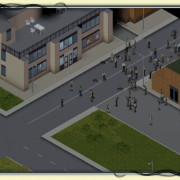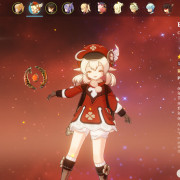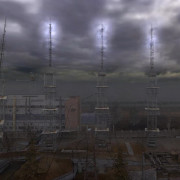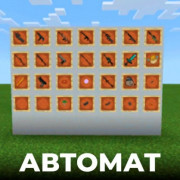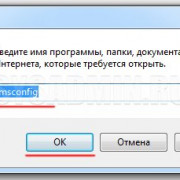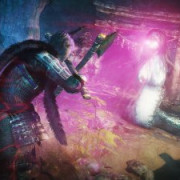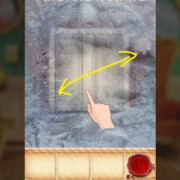The player (electroblob’s wizardry)
Содержание:
- Next Steps
- Spells
- Electroblob’s Wizardry Mod Installation
- Attributes and Equipment
- Behaviour
- Usage
- Gameplay
- Electroblob’s Wizardry Mod Screenshots
- Usage
- Mechanics
- Types of Upgrade
- Specifying wizardry as a dependency
- Map Legend
- Generation
- Trading
- Worldgen
- Attaching Wizardry’s source code
- Client Options
- First Steps
- Setting up your workspace
Next Steps
Congratulations, you’ve successfully begun your journey towards mastering the arcane! Wizardry, like Minecraft, is very open-ended — you can do whatever you want with your newfound magical powers. One thing you might want to do is to craft yourself a set of wizard armour — besides providing essential protection, it’ll also make you really look the part.
I also suggest going exploring: a world of wizards, magical artefacts, and of course spells, is out there to be discovered! Perhaps you want to conquer the deepest dungeons, wand in hand? Perhaps you want to seek knowledge from fellow wizards? Or maybe you want a magical library of every known spell? Better get collecting, there are no less than 172 of them!
So what are you waiting for? A world of arcane wonders awaits!
Spells
All of the spells in wizardry (and those in addons, if present) have their own config option allowing them to be enabled or disabled individually. If a spell is causing problems, creates an unintended exploit, or you just don’t like it, then you can turn it off here!
N.B. In order to preserve correct metadata values, the spell book and scroll (if it has one) will remain in-game and will be accessible in the creative menu. However, disabled spells may not be cast via any means, may not be bound to wands, will be excluded from any newly unlocked trades, and will not generate in chests or drop as loot. This ensures they are unobtainable in survival mode unless the spell book/scroll already exists in the world.
Electroblob’s Wizardry Mod Installation
This is a simple tutorial that will helps you to install Electroblob’s Wizardry Mod for Minecraft 1.13, 1.12.2 and others version successfully!
- The first thing to do is make sure you installed Minecraft Forge.
- Download the Electroblob’s Wizardry Mod below or from anywhere, make sure the mod is compatible with the version of Forge installed.
- Locate the Minecraft Application Folder:
- On Windows open Run from the start menu, type and click Run.
- On MAC OS X open finder, hold down ALT and click Go then Library in the top menu bar. Open the folder Application Support and look for minecraft.
- Place Electroblob’s Wizardry into your Mods folder. If you don’t have one, create it now.
- Now, just launch Minecraft with Forge profile!
Attributes and Equipment
Wizards have a 50% chance to spawn as specialists in one of the seven elements (about a 7% chance for each element), and a 50% chance of having no element. Wizards with an element wear the corresponding elemental armour and carry an elemental wand of that element, whereas wizards without an element wear regular wizard armour and carry a non-elemental wand. A wizard’s element affects the types of spells they cast and the trades they offer, though it does not currently give a potency bonus to their attacks. Wizards with an element also have special names such as ‘Pyromancer’ and ‘Earth Mage’.
Wizards spawn with a random tier of wand, but it is always powerful enough for the spells they cast. All wizards spawn with magic missile and three other spells chosen at random, with a high weighting on their element if they have one. In addition, all wizards know heal and use it independently from the rest of their spells, except healers, who know greater heal instead. They never drop their equipment, regardless of looting enchantments. Wizards also spawn with one of six randomly chosen skins, which have different hair and eye colours.
Behaviour
Wizards are normally friendly towards players and passive animals, but are hostile towards mobs and will attack them on sight using magic. Wizards will show interest in nearby players and watch them when they are within a certain range. Right-clicking on a wizard will display a trade GUI, similar to that of NPC villagers, allowing the player to trade with the wizard — see for more details.
If a player angers a wizard, either by hurting them or by breaking a block in their tower, the wizard will become hostile towards that player and start attacking them. This behaviour is similar to that of zombie pigmen, and like zombie pigmen, nearby wizards will also become hostile towards the player in question. If any of the wizards succeeds in killing the player, the wizards will no longer be hostile towards that player. Wizards will not trade with a player that has angered them. However, if a hostile mob attacks the wizard while the wizard is angry at a player, the wizard will stop attacking the player and attack the mob instead.
When in combat, wizards will select different spells at random to use against their opponent, incurring that spell’s cooldown each time. These are usually attack spells, but can also be defensive or utility spells such as blink or forcefield. When on less than full health, wizards will heal themselves periodically. When severely injured, they will heal themselves more often.
Usage
Special wand upgrades can be applied to wands using an arcane workbench. To do this, the wand is placed in the central slot and the upgrade is placed in the lower of the two slots on the left. Pressing the ‘apply’ button applies the upgrade to the wand, consuming it in the process. Up to 3 upgrades of a single type may be added to a wand, and the total number of special upgrades that may be applied to a wand depends on its tier — 3 for novice wands, 4 for apprentice wands, 5 for advanced wands and 6 for master wands.
Wand upgrades stack, so the more upgrades of a single type a wand has, the greater the effect will be. For example, a single storage upgrade will increase the amount of mana a wand can hold by 15%, two will increase it by 30%, and a maximum 3 storage upgrades will increase the mana capacity by 45%.
Gameplay
Options which affect wizardry’s general gameplay.
Discovery Mode
Determines whether spells that a player has not yet cast will be unreadable until they are identified (either using a scroll of identification or by casting the spell). Setting this option to false effectively removes the spell discovery mechanic, though wizardry still keeps track of which spells each player has cast, so this option may be turned on and off at will without affecting existing saves. The default value is true.
Friendly Fire
Determines whether spells cast by a player can damage or otherwise negatively affect that player’s allies. If set to false, a player’s allies will be completely immune to all magic damage from them, both direct (ignite, wither, etc.) and indirect (summoned creatures, traps, chain lightning, etc.) — this is in addition to the normal effects of designating a player as an ally. See Ally Designation System for more details on allies. The default value is true.
Telekinetic Disarmament
Determines whether players can use telekinesis to disarm other players. It is recommended that this is set to false on non-whitelisted servers to prevent players from stealing each other’s items. The default value is true.
Teleport Through Unbreakable Blocks
Determines whether players can teleport through unbreakable blocks (e.g. bedrock, barrier blocks) using the phase step spell. This is set to false by default so that the phase step spell cannot be used to teleport into the void, cheat in mazes, and such like.
Use Alternate Scroll Recipe
Determines whether a magic crystal is required in the crafting recipe for blank scrolls. This should be set to true if another mod adds a conflicting recipe. The default value is false.
Spell Book Drop Chance
Determines the chance out of 200 that mobs will drop spell books. Must be an integer between 0 and 200, with a value of 200 causing mobs to drop a spell book every time and a value of 0 causing spell book drops to be disabled entirely. The default value is 3.
N.B. This does not apply to evil wizards.
Player Damage Scaling
Determines the global damage scaling factor applied to magic damage dealt by players. This includes indirect damage, e.g. from players’ minions or constructs. Use this config option to alter the difficulty of the mod to your preference.
N.B. Some spells such as arrow rain use vanilla entities and will not be affected by this option.
NPC Damage Scaling
Determines the global damage scaling factor applied to magic damage dealt by NPCs such as wizards. This includes indirect damage, e.g. from NPCs’ minions or constructs. Use this config option to alter the difficulty of the mod to your preference.
N.B. Some spells such as arrow rain use vanilla entities and will not be affected by this option.
Summoned Creature Targets Whitelist
Determines which mobs summoned creatures are specifically allowed to target, if this does not happen by default. Wizardry makes a best guess as to whether a mob is a suitable target for summoned creatures, but sometimes mobs from other mods work differently. Must be a list of entity IDs, with modid prefixes (for example, , or ). The default value is (an empty list).
Summoned Creature Targets Blacklist
Determines which mobs summoned creatures are not allowed to target, overriding the default and the whitelist. Wizardry makes a best guess as to whether a mob is a suitable target for summoned creatures, but sometimes it is undesirable for them to target certain mobs from other mods. Must be a list of entity IDs, with modid prefixes (for example, , or ). The default value is .
Minion Revenge Targeting
Determines whether summoned creatures can revenge-target their summoner if their summoner attacks them. Set this to false if you want your minions to behave themselves at all times, or if you often find yourself accidentally hitting your minions with magic. The default value is true.
Electroblob’s Wizardry Mod Screenshots
Wizard Armour — A full set of regular wizard armour.
Black Hole — One of my personal favourite spells, black hole, in action.
Wizard Tower — A wizard tower in a forest.
Wizard — An ice mage chilling in his tower, wearing some ice mage robes.
Lightning Ray — Another of my favourite spells, lightning ray.
Summoned Minions — From left to right: ice wraith, blaze minion, lightning wraith.
Arcane Workbench — The wand floats above the arcane workbench, as if held by some ethereal force…
In the Nether — Fighting fire with fire. Always a good strategy.
Frozen Skeleton — Why let monsters bother you? Freeze them solid instead!
Spirit Horse — Summon forth your very own spirit horse, complete with saddle, and ride your translucent companion across the landscape.
Excessive use of magic — Do not try this at home, or there might not be much home left!
Petrified Creatures — Wizardry 1.1 includes this neat visual improvement to the petrify spell. Turn things to stone in style!
Usage
If the Baubles mod is installed, artefacts may be equipped by placing them in the appropriate bauble slot. Otherwise, an artefact is considered equipped when placed in a hotbar slot. Only the first two rings, and first one amulet or charm, can be active at any one time, with the leftmost hotbar slots taking priority.
Some artefacts require a particular spell to be bound to a wand on the player’s hotbar in order to function. The spell will be cast as if the player had cast it directly with the wand, so the wand must have enough mana to cast it. If there is more than one wand with the spell equipped, the leftmost wand will be used.
Mechanics
When initially generated, shrines are unactivated, and the chest in the centre is arcane-locked with no owner, preventing it from being opened or destroyed in survival mode. The shrine is activated when a player moves within 5 blocks of the central pedestal (which roughly corresponds to within the ring of pillars), signified by a sound and red particle effect. This immediately causes 3 evil wizards to spawn which match the shrine’s element, and a containment effect to be applied to all players, wizards and evil wizards within 15 blocks of the central pedestal. This effect is refreshed every second as long as the shrine is active, much like that from a beacon, preventing the player and the spawned wizards from escaping.
Once a shrine is active, it may only be deactivated by killing all three evil wizards that were spawned. Upon doing so, a second sound and particle effect signify that the shrine has been conquered, and the arcane lock on the chest is removed, allowing the player to access the loot inside. Once conquered, the containment effect no longer refreshes, and will wear off after 10 seconds, allowing any players inside to escape.
In creative mode, the shrine can also be deactivated by breaking the central runestone pedestal block. This block is unbreakable in survival.
Types of Upgrade
Storage Upgrade
Storage upgrades increase the mana capacity of wands. Each storage upgrade increases the amount of mana a wand can hold by 15%. This means, for example, that a single storage upgrade applied to a novice wand will increase its mana capacity from 700 to 805. A master wand with a maximum of 3 storage upgrades applied will have a mana capacity of 3625.
Siphon Upgrade
Siphon upgrades cause wands to extract mana from creatures their wielder kills. When a player kills any creature, the first wand on their hotbar* which has a siphon upgrade will gain a small amount of mana. The kill can be with anything, it does not have to be the wand with the upgrade — any kill that counts as a player kill will grant siphon mana. The mana gained is a random number from 3-5 per siphon upgrade. This means that a wand with 1 siphon upgrade will gain 3-5 mana per kill, a wand with 2 siphon upgrades will gain 6-10 mana and a wand with 3 siphon upgrades will gain 9-15 mana. Only the first wand on the player’s hotbar* gains mana for a kill, even if there are other wands with siphon upgrades on the player’s hotbar.
* The exact order of precedence is main hand, then offhand, followed by the rest of the hotbar left-to-right.
Condenser Upgrade
Condenser upgrades cause wands to slowly regenerate mana over time. When a wand with a condenser upgrade is in a player’s inventory or in an arcane workbench, it will gain 1 mana per condenser upgrade every 1.5 seconds. Unlike siphon upgrades, all wands with condenser upgrades will gain mana simultaneously, even if a player is carrying more than one.
Range Upgrade
Range upgrades increase the range of spells cast by a wand. Projectiles will fly further and faster, constructs can be created from further away, and ray-type spells will have a longer reach. Each range upgrade increases a wand’s range by 25%, so a maximum 3 range upgrades will give a 75% range increase. A few spells such as phase step have special behaviours with range upgrades; see individual spells’ pages for details.
Duration Upgrade
Duration upgrades increase the length of time spells cast by a wand last for. Summoned creatures will last for longer before vanishing, potion effects will last for longer, and conjured items and constructs will last for longer. Each duration upgrade increases the duration of spells by 25%, so a maximum 3 duration upgrades will give a 75% duration increase.
Cooldown Upgrade
Cooldown upgrades reduce the length of all spell cooldowns for a wand. Each cooldown upgrade reduces the cooldown time of spells by 15%, so a maximum 3 cooldown upgrades will decrease the cooldown time by 45%. This effect also stacks with the font of mana status effect.
Blast Upgrade
Blast upgrades increase the blast radius or area of effect of spells cast by a wand. Explosions will be bigger and spells with an area of effect will affect a larger area. Each blast upgrade will increase the radius of the area of effect by 25%, so a maximum 3 blast upgrades will give a 75% blast radius increase.
Attunement Upgrade
Attunement upgrades increase the number of spells that can be bound to a wand. Each attunement upgrade grants one additional spell slot, so a maximum 3 attunement upgrades will increase the number of spells a wand can hold from 5 to 8.
Melee Upgrade
Melee upgrades allow a wand to deal more melee damage at the cost of some mana. Each melee upgrade adds 2 damage (1 ) to the wand’s melee damage, and consumes an extra 4 mana on each melee hit. This results in the following values:
| Melee upgrades | Damage dealt | Mana consumed |
|---|---|---|
| 1 (0.5 x ) | ||
| 1 | 3 (1.5 x ) | 4 |
| 2 | 5 (2.5 x ) | 8 |
| 3 | 7 (3.5 x ) | 12 |
In addition, having 1 or more melee upgrades applied decreases the wand’s attack speed to that of a regular sword.
Specifying wizardry as a dependency
Next you’ll need to specify Wizardry as a dependency for your mod, which is done in your annotation using the following syntax:
This will do two things:
- It ensures Forge will always load your addon after wizardry. This is important for registries (and a few other things) to work correctly.
- If a user tries to run the game with your addon installed, but without wizardry, Forge will display a message telling them that wizardry must be installed.
It is also possible to define this information in your file instead, if is enabled in your `@Mod’ annotation.
Now you’re ready to start adding content to your addon mod! Check out the page on adding spells for a tutorial on how to add spells. Alternatively, take a look at the other tutorial pages on this wiki, or have a read of wizardry’s code — I endeavour to write useful Javadoc comments for all of the important classes and methods; you can learn a lot just by reading through the code itself.
Map Legend
RELEASE
A release is the distribution of the final version of a mod.
BETA
The mod developers release beta versions of release in order to garner useful feedback before releasing the final version of a mod.
ALPHA
The alpha release is a mod release that is still in the early testing phase.
NOTE
The Electroblob’s Wizardry Mod download links from below are available for Minecraft’s most popular versions so far, for others version (likes as 1.12.1 / 1.11.1 / 1.10.1 / 1.9.2 / 1.8.8 / 1.8.4 / 1.7.2 / 1.6.4 / 1.6.2 / 1.5.2 / 1.4.7) please visit the official website above!
Before starting to download any files from our website, please agree to follow rules:
- We do not host any Electroblob’s Wizardry files on our website.
- We do not modify or edit the Electroblob’s Wizardry in any way.
- We provide the original download links directly from the author of that particular Minecraft mod. Therefore, they are completely safe and secure.
- Download links are constantly updated, you will always download the latest available versions.
- If you have any problem with Electroblob’s Wizardry Mod, please leave a comment below and we will help you as soon we can.
Generation
Shrines generate on the surface of the overworld, or whichever dimensions are specified in the config. Their default spawn frequency makes them quite rare, considerably rarer than wizard towers, though this can be changed in the config. Shrines generate in all biomes. With the exception of the pedestal and chest, shrines are built exclusively of runestone. There are eight different shrine layouts, each with a different arrangement of pillars — however, the central pedestal with loot chest is always the same.
Each shrine is aligned to one of the seven arcane elements, which can easily be seen from the colour of the runestone from which it is built. This element also determines the element of the wizards that are spawned. Shrines cannot be aligned to the magic ‘element’.
The loot chest found in a shrine is guaranteed to always contain one artefact, with higher-tier artefacts being rarer. Artefacts are found nowhere else. Alongside this, the chest can contain a variety of magical items, including magic crystals and elemental crystals, spell books and scrolls, and wand and armour upgrades, as well as other loot such as books, paper and emeralds.
Trading
Wizards start out with four trades: three randomly chosen trades, and one trade which allows any spell book to be traded for 5 magic crystals (all wizards have this trade). Each time a player trades with a wizard, there is an 80% chance for the wizard to unlock a new trade, signified by them emitting pink potion particles for a few seconds. A maximum of 8 additional trades can be unlocked. The more trades a wizard has, the greater the chance that new trades will sell more valuable items, such as higher-tier spells and wands. For the statistically inclined, the exact chances are listed in the following table:
| Trades completed | Basic | Apprentice | Advanced | Master |
|---|---|---|---|---|
| 0 (starting trades) | 50% | 25% | 18% | 8% |
| 1 | 46% | 25% | 20% | 9% |
| 2 | 42% | 24% | 22% | 12% |
| 3 | 38% | 24% | 24% | 14% |
| 4 | 34% | 22% | 26% | 17% |
| 5 | 30% | 21% | 28% | 21% |
| 6 | 26% | 19% | 30% | 24% |
| 7 | 22% | 17% | 32% | 28% |
| 8 | 18% | 15% | 34% | 33% |
Chance for each tier of item when unlocking a new trade. Number of trades completed excludes the initial four trades. Wizard armour items are treated as apprentice tier, and wand upgrades are treated as advanced tier.
When generating a trade for a wand, spell book or wizard armour, there is an 80% chance that its element will match that of the wizard, unless the wizard has no element.
Worldgen
Options which affect how wizardry’s world generation features work.
Ore Dimensions
Determines the dimensions in which crystal ore will generate. Must be a list of integer dimension IDs. The default value is , which is just the overworld.
Flower Dimensions
Determines the dimensions in which crystal flowers will generate. Must be a list of integer dimension IDs. The default value is , which is just the overworld.
Tower Dimensions
Determines the dimensions in which wizard towers will generate. Must be a list of integer dimension IDs. The default value is , which is just the overworld.
Tower Rarity
Determines the rarity with which wizard towers will generate. Must be an integer between 0 and 50, with higher numbers meaning towers are rarer. The default value is 8.
N.B. Since structure generation is somewhat random, it is always possible for two or more wizard towers to generate near to each other.
Generate Loot
Determines whether wizardry loot will be generated in vanilla loot chests. Disabling this will prevent wizardry’s loot (as specified in the loot table chests/dungeon_additions.json) from being injected into vanilla loot tables.
N.B. This does not affect wizardry’s loot functions.
Attaching Wizardry’s source code
Whichever way you chose to set up your workspace, if you look inside the wizardry jar and open up any of the classes you’ll notice they’re completely unreadable. To get a readable version, you’ll need to attach the source code. The source code for all versions can be downloaded as a from GitHub as follows:
- Go to the releases page for wizardry’s GitHub repository (you can also access this from the main page by clicking releases on the right of the page)
- Find the release you’re developing for in the list
- Click the little icon below the release version number to download a zip file of the entire repository at that release
Once you’ve downloaded the source code, rename the file extension from to and move the file somewhere sensible (don’t put it in or Forge will think you have duplicate mods). Now use your IDE to attach the source jar to the compiled jar — again, if you don’t know how, you’ll need to look up how to do this for the IDE you’re using.
Client Options
Options that are specific to each player; these have no effect in the config file on a server.
Spell HUD Position
Determines the position of the spell HUD. Valid positions are ‘Bottom left’, ‘Top left’, ‘Top right’ and ‘Bottom right’ (without quotes). The default value is ‘Top left’.
Show Summoned Creature Names
Determines whether summoned creatures show nameplates above their heads. If set to true, summoned creatures will show a nameplate with the name of the owner and the name of the creature, for example, ‘Steve’s Zombie’. The default value is true.
Enable Shift-Scrolling
Determines whether spells can be switched between by sneaking and scrolling with the mouse wheel. The default value is true.
N.B. This does not affect the keybindings for spell switching; those can be disabled in the controls menu if desired by setting them to NONE.
First Steps
The very first thing you’ll want to do is collect magic crystals. These small items are a central part of wizardry — they’ll supply your wands with mana and you’ll need them in various crafting recipes. To start with, you’ll need at least 15 or so. You’ll find most crystals underground in the form of crystal ore, but there is another, quicker way to get them in early-game — I’ll leave that for you to work out! (Or you could just look it up on this wiki, but that’s boring…)
You should also gather a few other resources: some smooth stone, a handful of lapis lazuli pieces, some wool, a few gold nuggets and a couple of books.
Setting up your workspace
There are two different ways to set up your workspace:
- Using the wizardry jar file, stored locally (easier, but in some cases implementing won’t compile)
- Using CurseForge’s Maven repository (more advanced, but more powerful)
Using a local jar file
Next, make a folder called inside your project folder (the one with build.gradle in) and put the wizardry jar in there. Now if you launch Minecraft in your development environment, wizardry should be fully working in-game.
Using Maven
Maven is a build tool that allows dependencies to be fetched automatically from a URL, rather than downloading the jar file manually. As part of hosting mods, CurseForge provides a Maven repository allowing both compiled and deobfuscated versions to be fetched using Maven.
Open up your file and add a block if you don’t already have it:
Inside the block (the top-level one, not the one inside ), add the following:
Now, inside the block, add the line:
replacing the numbers and with the Wizardry and Minecraft versions you are using (make sure you keep the before the Minecraft version). The part in the quotes is referred to as a Maven classifier.
Finally, run , restart your IDE if it’s open, and refresh the Gradle project (, or in IntelliJ IDEA you can click the refresh button in the Gradle tab). If it errors, check that you have typed all addresses and maven classifiers correctly, or try repeating the gradle commands (it can behave a bit weirdly sometimes!)
